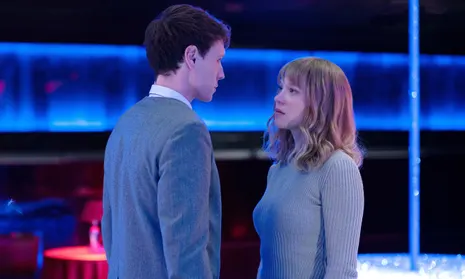In the cinematic landscape of 2023, the uncanny echoes of Henry James‘s “The Beast in the Jungle” resound through two distinct French adaptations, each offering a unique lens into the human condition and the looming specter of catastrophe. As we grapple with the very real challenges of climate change, artificial intelligence, and the enigmatic signals of our collective fate, these adaptations prove strangely relevant, shedding light on our contemporary anxieties.
Among them, director Bertrand Bonello‘s “The Beast” emerges as a profound and ambitious exploration of love, loss, and the relentless march of time. A departure from Bonello’s previous works, this foray into science fiction presents a triptych of timelines that weave together a haunting tale of human connection and disconnection across centuries.
READ MORE: David Fincher’s The Killer: A Thriller That Will Make You Second-Guess Your Trip to Home Depot
The film begins in 2044, a bleak future where artificial intelligence has subdued human society, leaving it devoid of vitality and purpose. Gabrielle (Léa Seydoux) and Louis (George MacKay) find themselves in a world where survival means purifying their DNA, erasing memories and emotions to become automatons. But their story unfolds across three distinct timelines, delving into the complexities of love and catastrophe.
In 1910, amid the opulence of Belle Époque high society, Gabrielle and Louis’s paths first cross on the eve of the Great Flood of Paris. Drawn to each other yet haunted by visions of disaster, their connection takes shape against the backdrop of impending doom. The film‘s portrayal of history offers a unique perspective on the catastrophic flood that reshaped Paris.
Fast forward to 2014, and the dynamic has drastically shifted. Louis has transformed into a wealthy, embittered incel in Los Angeles, harboring resentment towards women. Gabrielle, a French model and actor, finds herself isolated in a hostile city, navigating Louis’s unsettling stalking and deranged vlog posts.
Bonello’s storytelling structure is intricate, with the three timelines interwoven in a way that mirrors the complexities of human relationships and the passage of time. However, this complexity occasionally hampers the film’s rhythm, preventing the parallel stories from fully engaging with each other.
The 1910 timeline, shot in creamy 35mm by DP Josée Deshaies, stands out as the film’s most emotionally resonant segment. Its grand romanticism contrasts with the rest of the narrative, creating a compelling impact that lingers.
“The Beast” also excels in its portrayal of a near-future marked by absence and depopulation, cleverly visualized by production designer Katia Wyszkop. Actress Guslagie Malanda’s presence adds depth to the narrative, offering an ambiguous ally to Gabrielle and breaking up the Seydoux-MacKay duo.
However, the Los Angeles section, while featuring a bravely repulsive performance by MacKay, feels less authentic and relies heavily on topical themes, reducing its impact.
Despite occasional narrative complexities and a sense of being overly preoccupied with its own concepts, “The Beast” reminds viewers of Bertrand Bonello’s status as a formidable formalist in French cinema. The film’s moments of cinematic brilliance, such as Gabrielle’s green-screen concepts, reinforce this reputation.
In the end, “The Beast” is a film that constantly pulls away, much like its characters, grappling with the weight of its themes. Yet, like the enigmatic pigeon that playfully waddles into the frame as a harbinger of doom, it offers glimpses of grace and profundity amid its cerebral explorations.
